Local History
Flesherton
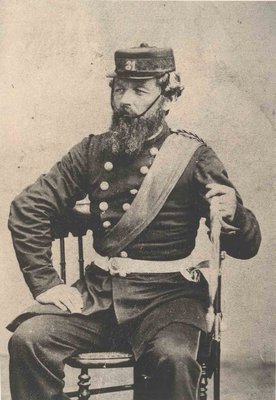
W.K. Flesher Details
William Kingston Flesher arrived in Artemesia in 1853, taking up land on the Boyne River to start a grist and saw mill operation. He was very active in the community acting as postmaster and even doctor in the early days of settlement. He also bought up land on the Corners and turned them into town lots, encouraging other businesses to locate themselves there. It was around this time when the name Artemesia Corners was changed to Flesher's Corners and then later to Flesherton.
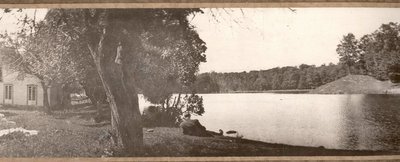
W.K. Flesher's Home Details
The Flesher home (left) was located on the bank of Flesherton Pond. Prior to refrigeration, the 8 acre pond was a main source of ice for the town.
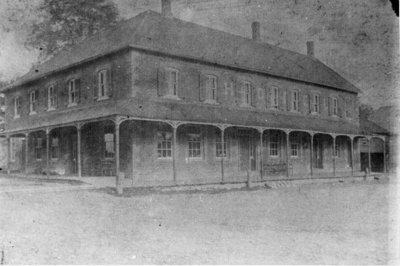
Munshaw Hotel, 1880 Details
While Flesher surveyed the NW end of the Corners, Aaron Munshaw surveyed the south side. Munshaw was actually the first settler on the Toronto-Sydenham Road, building a small hotel south of the Durham Road in the 1840s. In 1849 he built a larger building on the SE corner, where it still stands today.
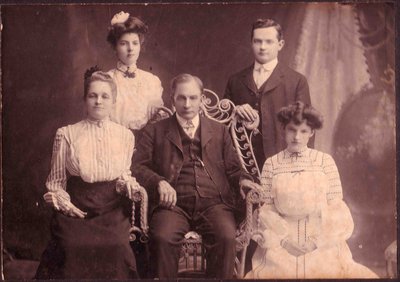
Aaron Munshaw Jr. and Children Details
This building was a main hub for the town and it's barn was always filled with the buggies and horses of travellers. When Munshaw died in 1876, his son Aaron Jr. took over the business. After him his daughter Minnie and her husband were in charge. The hotel remained in the family for five generations until its sale in 1964.
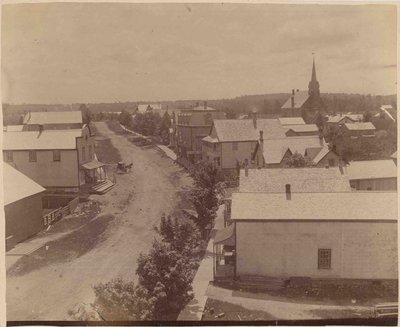
Toronto St. S, Flesherton, 1870-1900 Details
Early photograph of the main street in Flesherton. This was before the downtown buildings were constructed by William Armstrong at the turn of the 19th century. In the lower left corner is Munshaw's barn and the upper right features the Strain building occupied by a tin shop; next to it is the town's tailor.
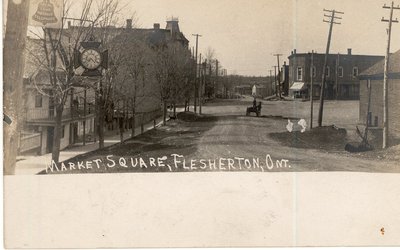
Market Square, 1891-1900 Details
The square in front of Munshaw's Hotel (his barn is on the far right); this spot became home to an annual Horse Fair for buyers and exhibitors. The town clock can be seen in the foreground as well as a sign for the Bell Telephone Company, which came to Flesherton in 1891. In the background, on the NE corner, is the Sproule Building.
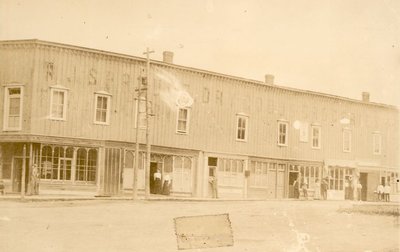
Sproule Block Details
This building, owned by R.J. Sproule, was on the corner of Toronto St and Collingwood St. and once took up the entire block. It held a number of businesses including a general store, post office, grocery, feed store, and barber shop.
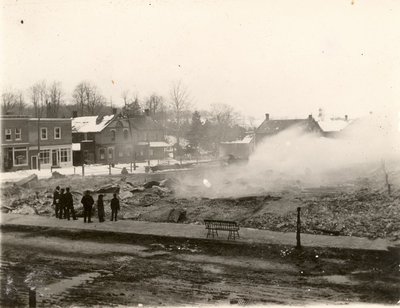
Sproule Block Fire, December 1910 Details
At the end of the year 1910 a fire of unknown origin decimated the entire Sproule Block.
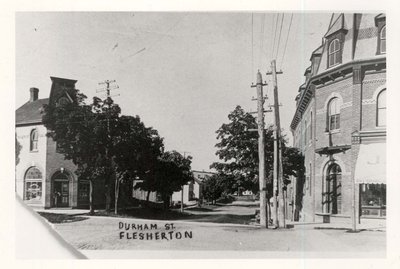
Flesherton Corners - Durham Street Details
Brothers John and William Boyd were in a partnership with Fred Hickling and owned the "Boyd and Hickling" General Store (right). In 1906, Hickling sold his shares and the store became "J. & W. Boyd's". John was the manager of the store and tended its operation. A few years later the place was sold to Lowden Wright and the business moved to Markdale.
The building to the left sold shoes. It was damaged in a fire decades later and is no longer standing.
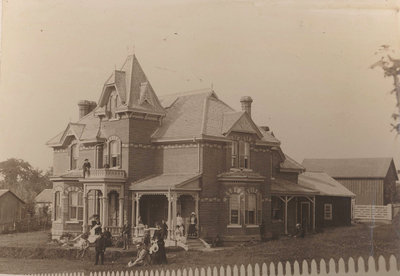
Armstrong Hickling House Details
The property was purchased by John Wesley Armstrong, an merchant and early settler, in 1871. He then built this spacious house as a family residence. It was bought by his son in law, Fred Hickling, in 1922.
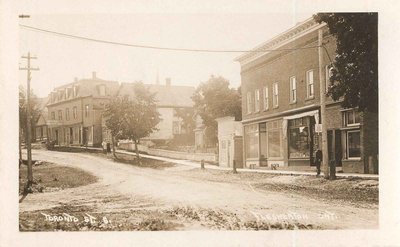
Toronto Street, 1900 Details
The downtown buildings on the right was constructed by William A. Armstrong in the early 1900s. The small white structure housed the Bell Telephone company and the brick buildings held businesses such as Duncan's Hardware and Hickling's Store was established by Fred Hickling in 1911.
On the left is the Strain building which as occupied by Furniture and Undertaking business operated by W.H. Bunt. This operation passed hands several times before being taken over by the Fawcett family, who still own the funeral directing business in town. The furnace exploded in 1970, destroying the building and causing damage to the surrounding structures.
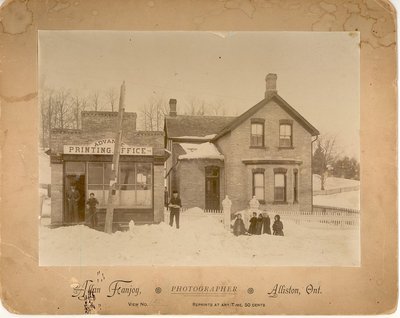
Early Flesherton Advance Office Details
The Flesherton Advance began printing June 1881 with A.R. Fawcett as head editor. The office was situated at 26 Sydenham street until it was moved to the corner of Collingwood and Peter at the end of the century.
Lead masthead for The Flesherton Advance. To be printed at the top of every paper.
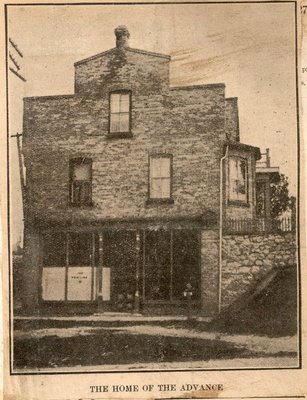
Flesherton Advance Office Details
The Advance moved to this location on the corner of Collingwood and Peter St. in 1900 where it remained for another 68 years. In 1888 Willard H. Thurston become head editor who then proudly passed the job on to his son, Frank, in 1938. It changed hands a few times after 1961 before the owner of the Dundalk Herald purchased the paper in 1968. The two newspapers have been printed in conjunction in Dundalk ever since.
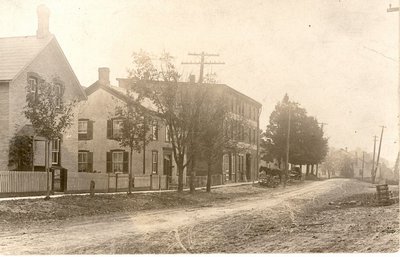
Heard House Details
Heard's Carriage Works and Blacksmithing was established in 1860. John Henry Heard lived in a white, two-storey house which was right next to his three-storey workshop. Manufacturing was discontinued in the early 1900s but he continued selling other companies' wagons and carriages. Heard also carried on blacksmithing until the growth of the automobile trade. When John died in 1904 the business was taken over by his son John Alexander and the shop remained open until his death in 1936.
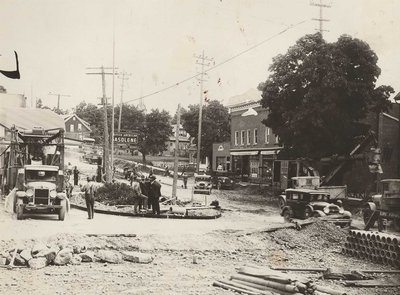
Flesherton Corners Being Paved Details
The streets of Flesherton were paved in the early 1930s. Roads had to be dug up to make the ground level - a backhoe can bee seen on the right. The paver was attached to the back of an automobile, it is pictured parked in front of the Munshaw Hotel.

